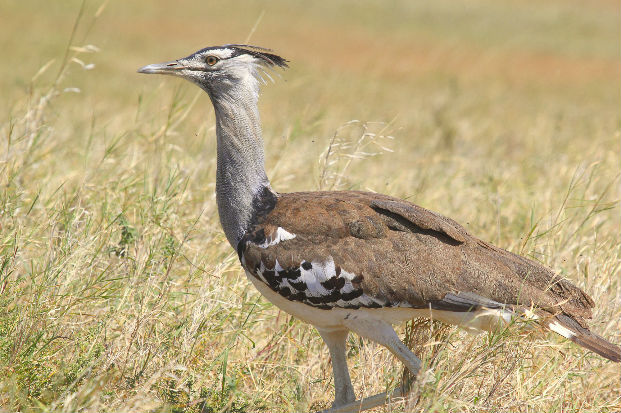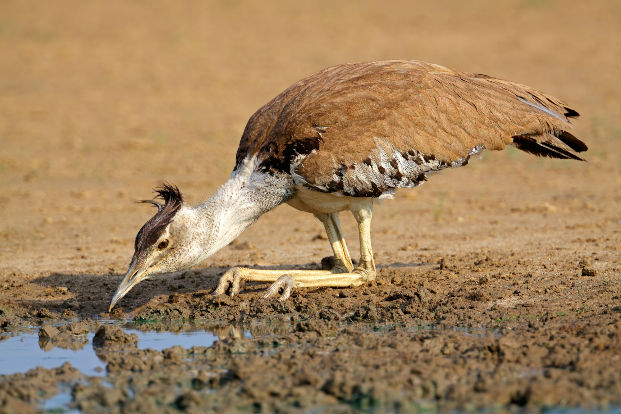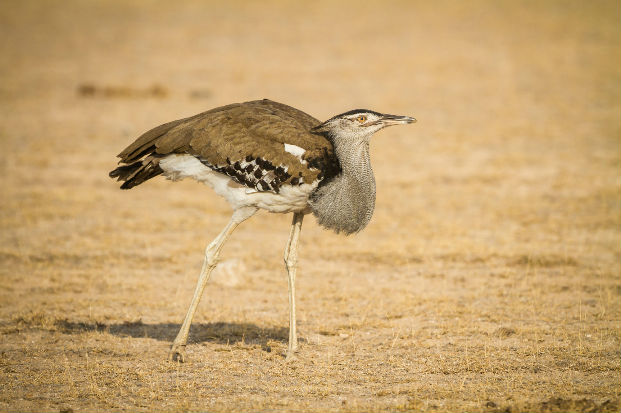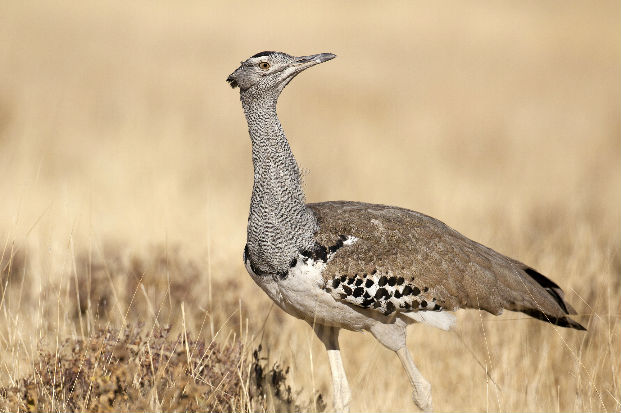The heaviest flying bird in the world, the kori bustard can weigh as much as 19kg. They are found walking around dry open savanna woodland foraging for a wide range of insects, reptiles, berries, seeds and bulbs. They are particularly fond of acacia gum. This gives them their Afrikaans name of “Gompou”, translated as “gum-bustard”.
Vote for the fact you find most fascinating
Kori bustards will duel for up to 30 minutes by standing chest to chest pushing one another back and forth.
2,400 years ago the Greek historian, soldier and philosopher Xenephon wrote about how bustards could be captured by running them to exhaustion. Their size and taste made this worthwhile.
The Afrikaans name for the Kori bustard is “Gompou” which means “gum-bustard” due to its fondness of acacia gum.
The kori bustard is the world’s heaviest flying bird weighing in at 19 kg.
Once kori bustards have finished mating the male’s role in the process is complete, he will then return to displaying to attract another female.
The southern carmine bee-eater rides on the back of the kori bustard to catch insects as they fly from the grass when disturbed.
Male kori bustards will display for the female by strutting around a regular site with its crest erect, neck inflated by 4 times its usual size, head held up, bill open and its tail feathers fanned and standing upright.








